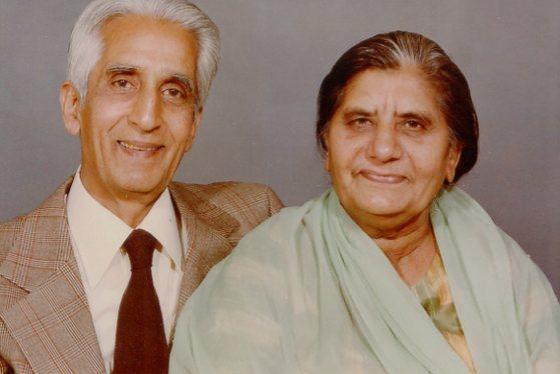
The late Rai Sadruddin Khimani (19 May 1917 – 15 September 2011) and his beloved wife Raibanoo Malek Khimani (28 April 1919 – 17 November 1997) were affectionately known as “Master” and “Masi” by the South African Ismaili Jamat, which they served for a period of 36 years from 1944-1981. Photo: The Khimani Family Collection, Vancouver, Canada.
Master Khimani: A Man of Wisdom and a Pillar of Strength for the South African Jamat
By Abdulmalik J. Merchant
(Publisher-Editor, www.simerg.com)
As a child, I recollect seeing bumper issues of the old Ismaili magazine as well as other Ismaili magazines in my parent’s collection. Then, as my parents moved from one part of the world to another, it became their practice to donate their rare magazine collections to the various Jamatkhana libraries, which depleted the family collection, which we came to miss. However, all that was assuaged during my recent trip to Vancouver when I came into touch with the family of the late Master Khimani and his wife, Malek, of South Africa.
My parents knew the Khimanis well. My parents informed me about their institutional service in South Africa 6 years before they (my parents) commenced their Jamati service in Mozambique in 1954. The Khimanis’ migration to South Africa was in response to a request made by Prince Aly Khan in Bombay in 1947, that they be employed by the Aga Khan Council for South Africa, as Religious School teachers. Despite unfavourable political situation and dwindling numbers of students, the Khimanis affectionately known as “Master” and “Masi”, remained in the country for a period of 36 years, until 1981, serving the Jamat in an exemplary manner. In addition to educating the youth, Master Khimani conducted religious classes for all ages, regularly delivered Waez to the Jamat, served as Honorary Secretary of the Ismailia Council, and as Mukhi and Mukhiani for many years. He also performed weddings, conducted funerals, oversaw the care of the Jamatkhana and Nursery School premises.
Masi was busy raising a family of four, teaching side by side with Master, and working part time at the Aga Khan Nursery School and was a tower of strength for Master. The Master’s wisdom and profound knowledge of Islam drew many members of the Jamat to him to help resolve disputes, seek personal advice as well as to gain a deeper understanding of the faith. Their exemplary lives remain an inspiration to the South African Jamat everywhere.
It was indeed a privilege for me to meet with members of the late Master’s family. They generously shared with me their collection of rare photographs, letters, magazines and books. A selection of historical images from the early 19th and 20th centuries will be published on this website starting with this piece. I thank the Khimani family for sharing their documents with Simerg and its readers. We hope to publish a detailed account of Master Khiman’s contribution to the Jamat at a later date. In the meantime Simerg welcomes feedback from its readers, especially those from South Africa, about any memories of Master and Masi Khimani they would like to share.
The (Original) Ismaili – Bold, Vibrant and Visionary under the Editorship of A. J. Chunara
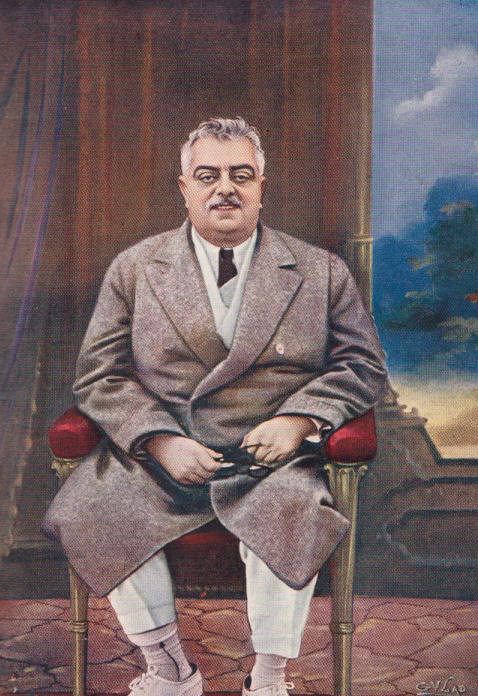
A portrait taken in New Delhi of Sir Sultan Mahomed Shah, His Highness the Aga Khan III, the 48th Imam of Shia Imami Ismaili Muslims, directly descended from the Prophet Muhammad (s.a.s). Photo: Sadruddin Khimani Family Collection, Vancouver, Canada.
Imagine the 1920’s when there was no internet, the pace of travel and communication was slow and the publishing world relied on archaic printing technology. Even then, the Ismaili community had a vibrant literary scene at that time.
There was one Ismaili in India who tirelessly strove to produce a comprehensive journal which included stimulating articles, and photographs (black and white as well as colour) from around the Ismaili world. The magazine was called “The Ismaili”, the name now utilized for today’s versions of The Ismaili that are produced around the world (e.g.The Ismaili Canada, The Ismaili USA) complemented by an official website (theismaili.org).
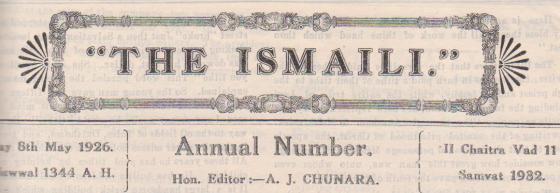
The main inside page of a special annual edition of “The Ismaili” edited by A. J. Chunara, who also authored the famous Ismaili historical work “Noorum Mubin.” Photo: Sadruddin Khimani Family Collection, Vancouver, Canada.
The editor of the original Ismaili, Alimohamed Janmohamed Chunara, known as A. J. Chunara, was imaginative, creative and bold in his approach. Week in and out he and his colleagues painstakingly and proudly produced the Ismaili, with a wonderful bumper issue for festive occasions. There was an incredible literary output from all sectors of the Jamat, on different aspects of the faith and secular matters. Chunara’s contact with Ismailis around the world were incredible, as demonstrated by the photographs that will produced over the next several weeks, gathered from the Ismaili collection of Master Khimani.
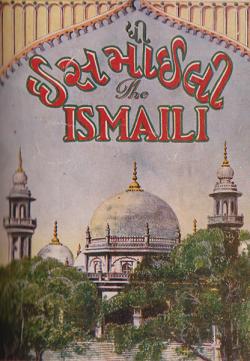
Front cover of a special birthday number of “The Ismaili” published on 17th April 1928. Photo: Sadruddin Khimani Family Collection, Vancouver, Canada.
No village, town or city was excluded for the purpose of illustrating the activities that were taking place in the Ismaili world. Chunara gathered the wits of Urdu, English and Gujarati writers and put out a lively journal sustained by advertisement support. How he did that in that age in India is intriguing. It appears that he had Facebook contacts everywhere! The Ismaili was published by him privately with the endorsement of the Ismaili Jamati institution known as the Recreation Club (later called the Ismailia Association and then the Ismaili Tariqah and Religious Education Board or ITREB). When one peruses through old magazines, the advertisements catch your eye instantly. Modern Shell’s slogans of its cleaner gas ads today are no more convincing than than those of the 1920’s – “Shell’s gas was a purifying agent and added extra horsepower to the car.” Very familiar indeed.
The literary scene in the Jamat judging by the original Ismaili and other Ismaili magazines I collected from the Khimanis was vibrant. It certainly provides for a deeper reflection on editors like myself to engage Ismailis from around the world to contribute regularly on varied religious and non-religious topics.
Once again my deep gratitude to the Khimani family for rekindling my love for our old literary magazines.
Date posted: Friday, May 18, 2012.
Last update: Saturday, May 26, 2012.
________________
(Note: The exact dates of many of the photos are not known. The photos appeared in The Ismaili during the period 1923-1929. The first Ismaili issue was published on October 8, 1923. Many photos are much earlier than 1923).
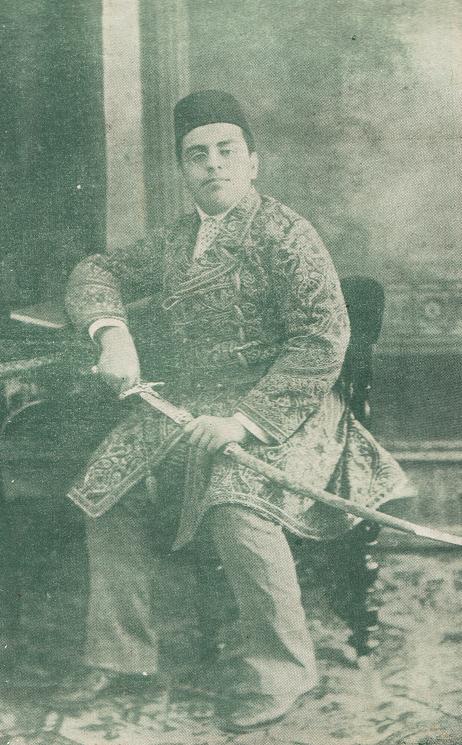
A portrait of Sir Sultan Mahomed Shah Aga Khan III taken when he was a young man. Photo: Sadruddin Khimani Family Collection, Vancouver, Canada.
~~~~~~~~~~
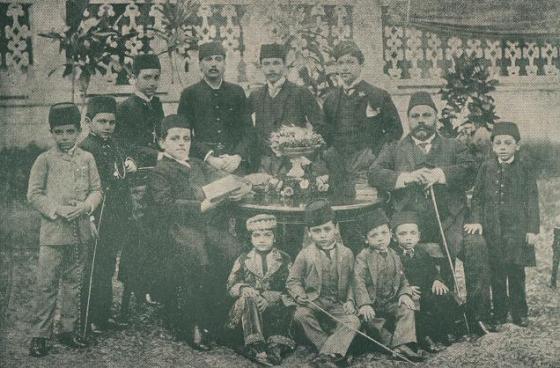
Sir Sultan Mahomed Shah Aga Khan, is seen seated at left holding a book. In the photo are members of his family. Although very young in age, he was the head of family, being the 48th Imam of the Ismailis. Photo: Sadruddin Khimani Family Collection, Vancouver, Canada.
~~~~~~~~~~
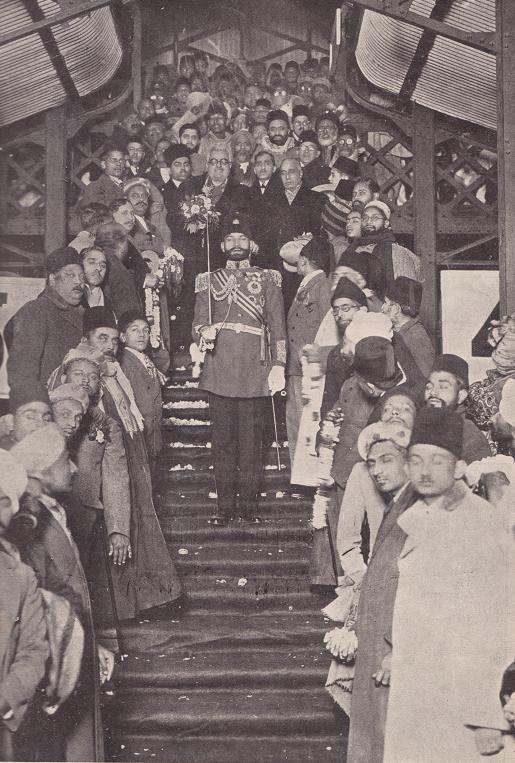
Sir Sultan Mahomed Shah Aga Khan arrives at the Railway Station in Delhi to preside over at the All Parties Moslem Conference held in the city. Photo: Sadruddin Khimani Family Collection, Vancouver, Canada.
~~~~~~~~~~
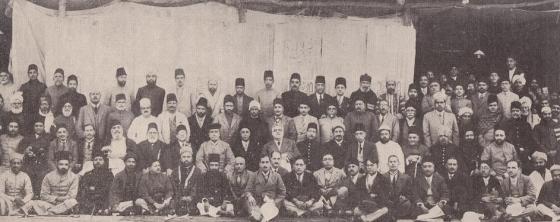
Sir Sultan Mahomed Shah Aga Khan pictured with delegates of the All Parties Moslem Conference held in Delhi in Janauary 1929. The Ismaili Imam presided over the conference. Photo: Sadruddin Khimani Family Collection, Vancouver, Canada.
~~~~~~~~~~
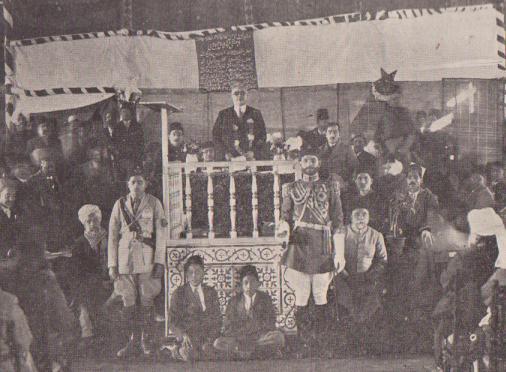
Sir Sultan Mahomed Shah Aga Khan seen delivering his speech at the All Parties Moslem Conference at Delhi. Photo: Sadruddin Khimani Family Collection, Vancouver, Canada.
~~~~~~~~~~
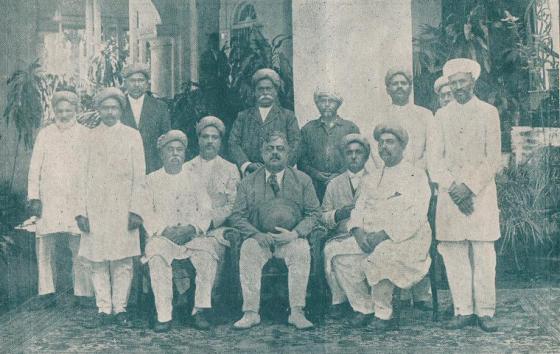
Sir Sultan Mahomed Shah Aga Khan with members of the Ismaili Council in Poona, India. Photo: Sadruddin Khimani Family Collection, Vancouver, Canada.
~~~~~~~~~~
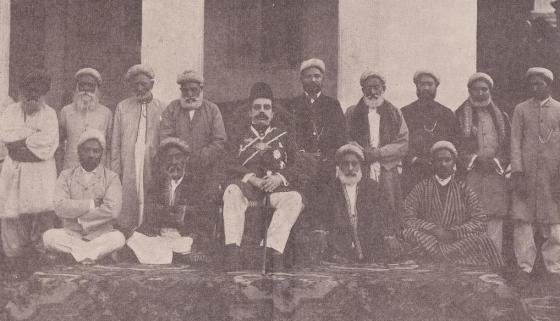
Sir Sultan Mahomed Shah Aga Khan with members of the Ismaili Council in Karachi. Photo: Sadruddin Khimani Family Collection, Vancouver, Canada.
~~~~~~~~~~
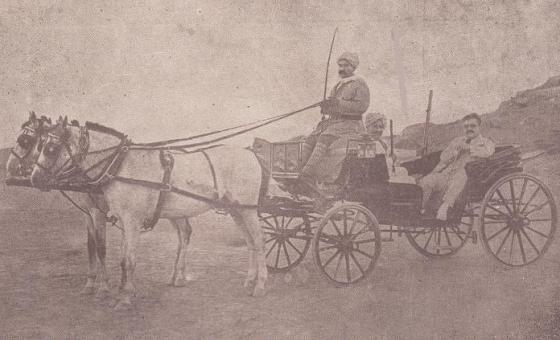
Sir Sultan Mahomed Shah Aga Khan going on a hunting trip while visiting the city of Karachi, where he was born on November 2, 1877. He became the 48th Imam of the Ismailis at the age of 7 and reigned the community for a period of 72 years until July 11, 1957. Photo: Sadruddin Khimani Family Collection, Vancouver, Canada.
~~~~~~~~~~
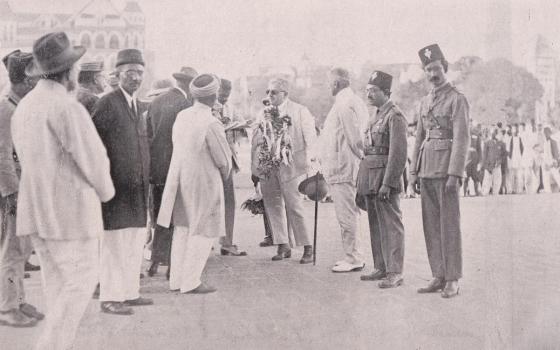
Ismaili leaders bid farewell to Sir Sultan Mahomed Shah Aga Khan at Bombay’s Apollo Pier as he prepares to depart for Africa. Photo: Sadruddin Khimani Family Collection, Vancouver, Canada.
~~~~~~~~~~
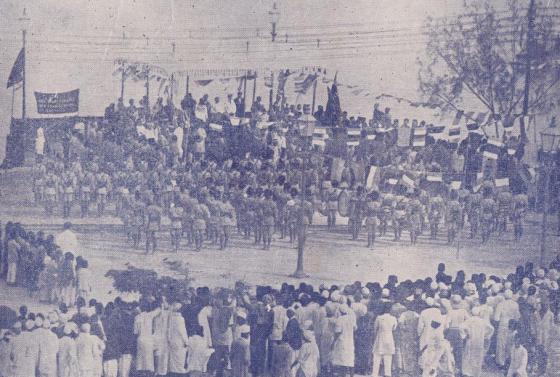
Sir Sultan Mahomed Shah Aga Khan accepts a salute from the Guard of Honor in Zanzibar. The Zanzibar public enthusiastically welcomed His Highness to the Island, while the government paid its highest courtesies to the Ismaili Imam. Photo: Sadruddin Khimani Family Collection, Vancouver, Canada.
~~~~~~~~~~
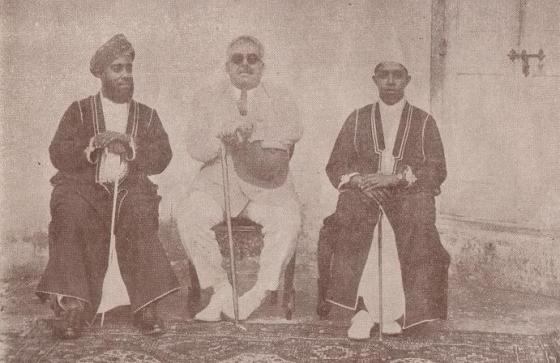
Sir Sultan Mahomed Shah Aga Khan with the Sultan of Zanzibar (left) and the Crown Prince of Zanzibar. Photo: Sadruddin Khimani Family Collection, Vancouver, Canada.
~~~~~~~~~~
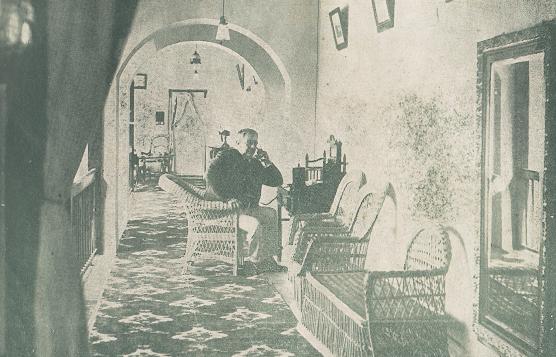
Sir Sultan Mahomed Shah Aga Khanin a telephone room at the Zanzibar Palace. Photo: Sadruddin Khimani Family Collection, Vancouver, Canada.
~~~~~~~~~~
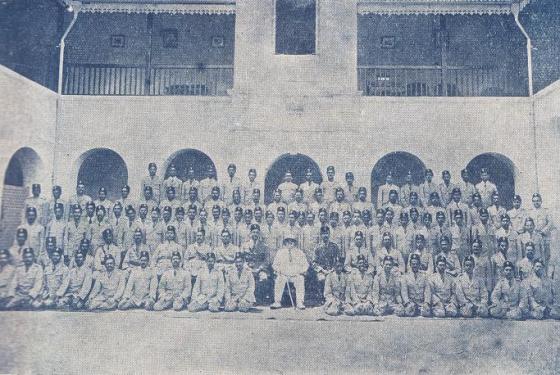
Sir Sultan Mahomed Shah Aga Khan with the Punjebhoy Club Sporting Team of Zanzibar. Photo: Sadruddin Khimani Family Collection, Vancouver, Canada.
~~~~~~~~~~
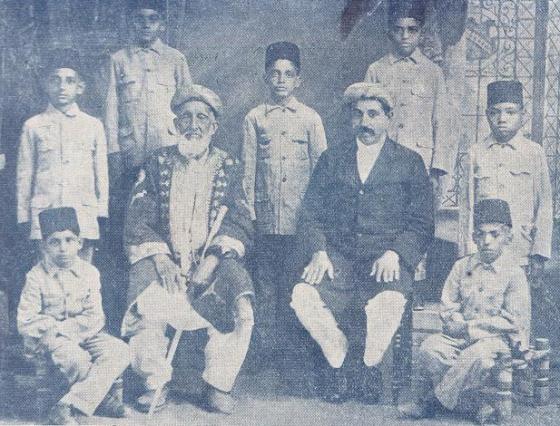
Orphans with Trustees of the Monghibai Orphanage in Zanzibar. Photo: Sadruddin Khimani Family Collection, Vancouver, Canada.
~~~~~~~~~~
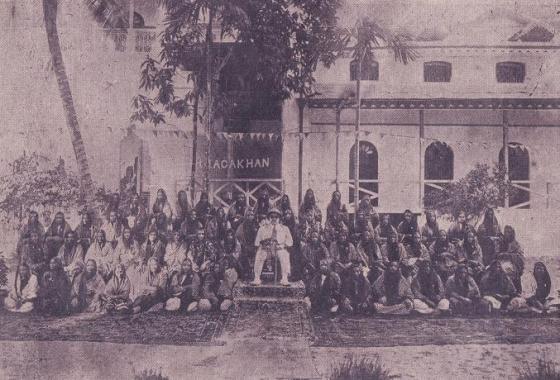
Sir Sultan Mahomed Shah Aga Khan with Ismaili Ladies Volunteer Corps, Zanzibar. Photo: Sadruddin Khimani Family Collection, Vancouver, Canada.
~~~~~~~~~~
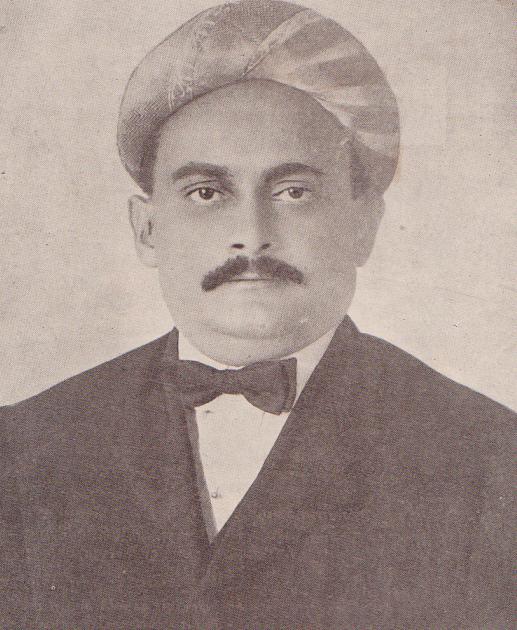
A portrait of Varas Madadalibhai Suleman Virji. His generous donations to the Ismaili Religious and Social Institutions and particularly in the building of the Nairobi’s iconic Town Jamatkhana (formerly Kenya’s Darkhana) has earned him a place in Ismaili history. Photo: Sadruddin Khimani Family Collection, Vancouver, Canada.
~~~~~~~~~~
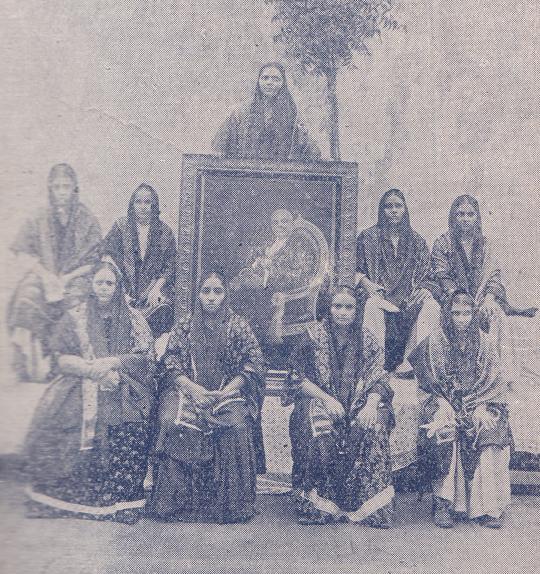
The Mombasa Ismaili Ladies Emergency Committee. Group pictures such as this often contained a large portrait of the Ismaili Imam at the centre. Photo: Sadruddin Khimani Family Collection, Vancouver, Canada..
~~~~~~~~~~
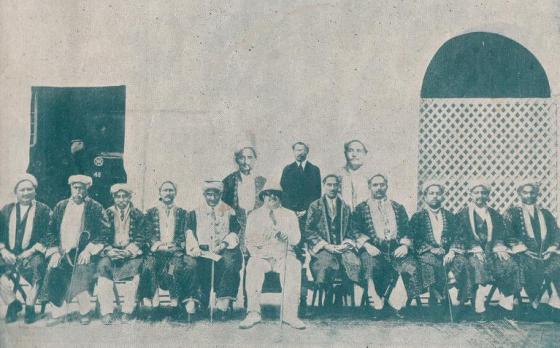
Sir Sultan Mahomed Shah Aga Khan with members of the Ismaili Council in Zanzibar. Missing members are represented by their respective large portraits behind the front row. Photo: Sadruddin Khimani Family Collection, Vancouver, Canada.
~~~~~~~~~~
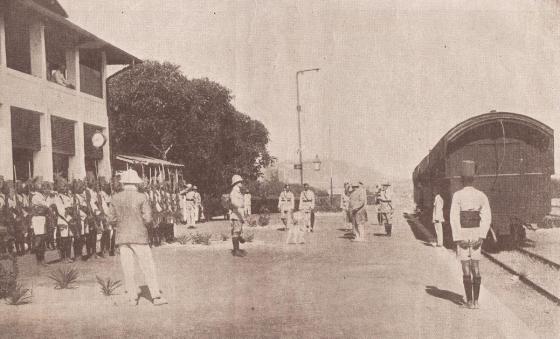
Sir Sultan Mahomed Shah Aga Khan III receives a salute from the Guard of Honour as he leaves Dodoma by train for Dar-es-Salaam. Photo: Sadruddin Khimani Family Collection, Vancouver, Canada.
~~~~~~~~~~
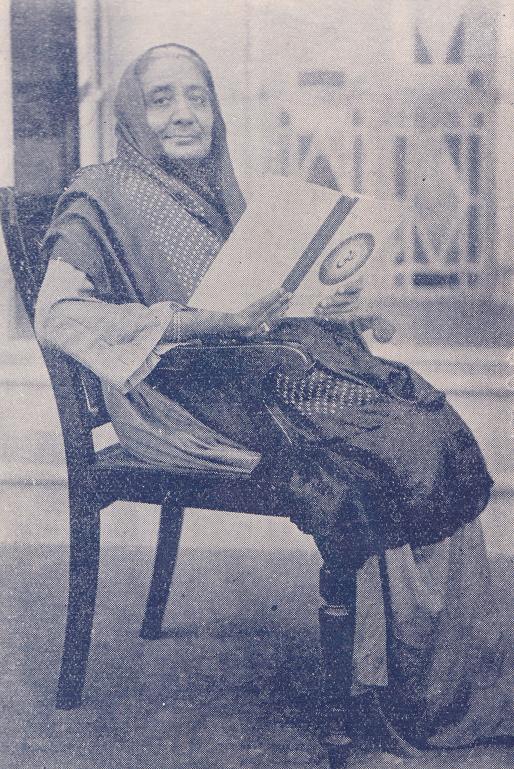
A portrait of Jenabai Navasariwala. She was the founcder of the Jenabai Sanatorium in her town Navasari, and also made a significant contribution to a Jamatkhana in Bombay. Photo: Sadruddin Khimani Family Collection, Vancouver, Canada,
~~~~~~~~~~
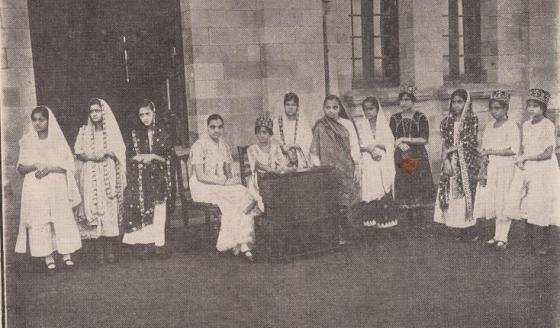
Members of the music class of the Aga Khan Girl’s School in Kisumu. Photo: Sadruddin Khimani Family Collection, Vancouver, Canada.
~~~~~~~~~~
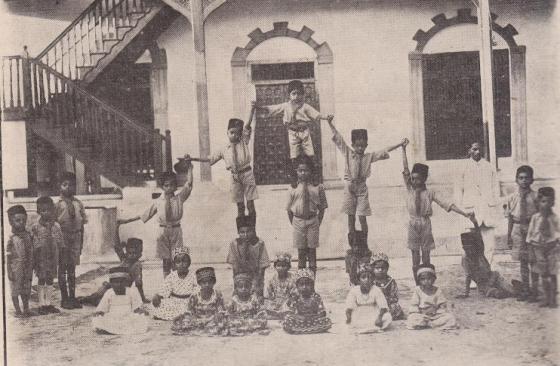
A drill by the Aga Khan Boy Scouts of Pemba while little girls seated in the front look straight at the camera. Photo: Sadruddin Khimani Family Collection, Vancouver, Canada.
~~~~~~~~~~
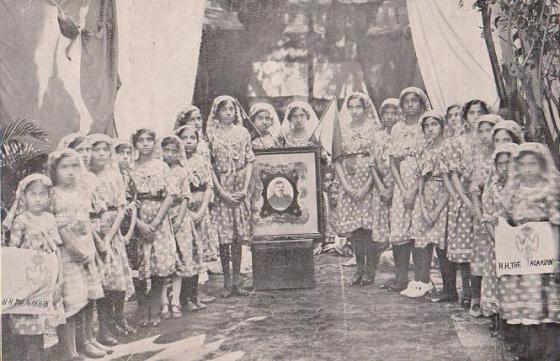
Girl Guides of the Ismaili Community – shouldering the responsibilities of their sisters. Note the portrait of the Ismaili Imam, Sir Sultan Mahomed Shah Aga Khan. Photo: Sadruddin Khimani Family Collection, Vancouver, Canada
~~~~~~~~~~
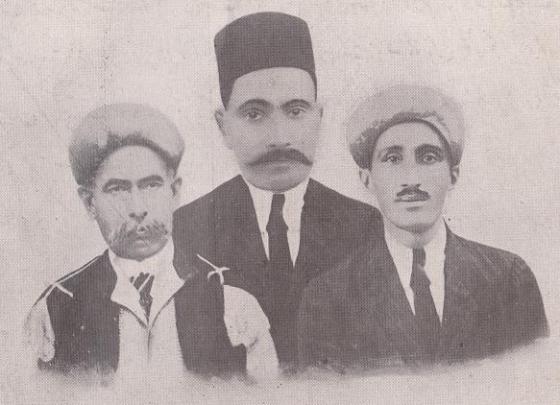
Portraits of Karmali Daya, Lalji Ladha and Missionary Khudabux Talib. They all died in a tragic car accident in 1925 when they were travelling from Kilosa to Iringa in heavy rains. Mumtaz Ali Tajdin records in his book “101 Ismaili Heroes” that the Supreme Council for Dar-es-Salaam routed an urgent telegram to Mawlana Sultan Mahomed Shah on December 15, 1925, which received the followng reply: “Those who have sacrificed their life for Allah and religion are in first rank of Shahids…Inform that these Shahids are close to my thoughts.” Photo: Sadruddin Khimani Family Collection, Vancouver, Canada.
~~~~~~~~~~
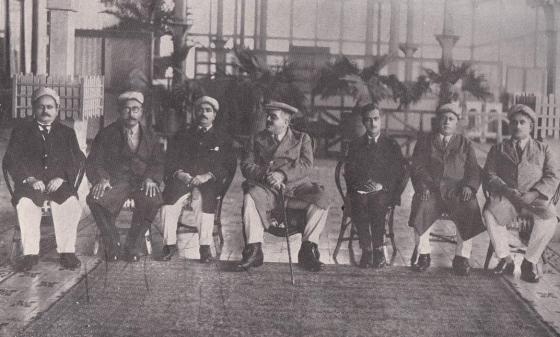
Sir Sultan Mahomed Shah Aga Khan pictured with leaders of the Ismaili community at the Casino Palace Hotel, Port Said, while he was on his journey to Europe. In the photo are Rai Madatali Suleman, Missionary Husenibhai Pirmahomed, Vazir Rahimbhai Basaria, Varas Gulamhussein Mahomed Jindani, Rai Abdullabhai Shariff and Rai Hussein Vali Dharsi. Photo: Sadruddin Khimani Family Collection, Vancouver, Canada.
~~~~~~~~~~
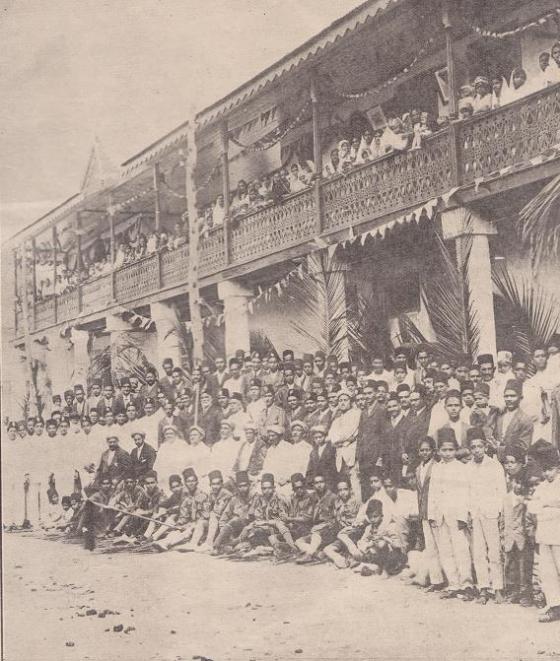
A large Ismaili gathering outside Tanga Jamatkhana, Tanganyika (now Tanzania) witnessing the raising of the Ismaili colours. Photo: Sadruddin Khimani Family Collection, Vancouver, Canada.
More photos from the Khimani collection: Please click Historical Photos from the Archives of Master Khimani of South Africa – Part II
_______________
About the writer: For a profile of Abdulmalik Merchant, please see Personal Reflections.
Share this article with others via the share option below. Please visit the Simerg Home page for links to articles posted most recently. For links to articles posted on this Web site since its launch in March 2009, please click What’s New. Sign-up for blog subscription at top right of this page.
We welcome feedback/letters from our readers on the essay. Please use the LEAVE A REPLY box which appears below. Your feedback may be edited for length and brevity, and is subject to moderation. We are unable to acknowledge unpublished letters.

Great Collection. And Priceless Information!!!!!!
A great great collection.
What a record of history in pictures and clips. Thanks a million!
………..
Dear All ,
Ya Ali Madad ,
Undoubtedly A Great Collection , thanks to providers and publishers ,
……….worth to be preserved in our own collections – albums ,
………..worth to be put in each our religious education centers , to feed knowledge they search for ,
………invite other worldwide ismailis , to send – put here their such collections , what ever they are having ,
……this is part of our permanent religious treasures ,
……which will provide encouragements to other ismailis , for their services to Imam and Jamat/s Worldwide
…..thanks
…ya ali madad
……mansoor noorani
…india…..!
Wonderful! These photos are eternal memories of Ismailis.
Wonderful pictures and unbelievable! When I see these, I think I am dreaming seeing Sir Sultan Mohammed Shah’s childhood pictures!
ThIs historical records will filter through our future generation & will keep our culture ,
tradition and jamat strong. Inshah Allah. May their soul rest in eternal peace.
Vazir Madatali Suleiman Verjee:
The caption appended below the photograph appears correct although the header ‘MERCHANT PRINCE OF AFRICA’ is missing. Apart from the financial contribution towards the construction of Nairobi’s then Darkhanna, Vazir Madatali is credited with an illustrious record of service to the Ismailia Community in Kenya having served as Chairman of both The Ismaila Association and the Education Board and President of the Council.
Thank you for the update. The captions were compiled from “The Ismaili” as they appeared in the photos at the time (1923-1929 time frame).
An excellent collection – I am seeing this for the first time in my life.
Excellent collection of rare photographs.
A wonderfull collection. May Mawla bless you for your commendable effort.
Excellent pictures and comments. The South African Jamat benefitted by having Master and Masi in South Africa. Although we were a thousand miles away from Pretoria (in Cape Town), we also benefitted from his knowledge. He would always make sure that the Cape Town Jamat participated in all the jamati functions and taught us a lot. After moving to Pretoria, and as newly weds he would give all the young couples lessons on the various religious kirias (ceremonies) and welcome any questions that we had. Masi in turn looked after my children, and treated them like her own grand children for which we are very grateful.
We remember them very fondly and we pray that their souls rest in eternal peace – Ameen.
I had the privilage of attending “Master” Khimani’s school in Pretoria in the early sixties (1960’s) having come from a small town north of Pretoria known as Louis Trichardt.The grounding in religious knowledge I gained from him enabled me to add to it such that I was able to teach children at Bait-Ul-Ilm in London, England. I now teach children Eid Namaz.
I pray their souls rest in eternal peace. Ameen.
Huzur Mukhi Mohamed Hajee
Excellent! Well done. There are some photos very new to me and they deserve praise. They reminded my early age.
An excellent collection.
I went to Master and Masi’s school. I have very fond memories of those days. I was born in Pretoria, South Africa, and lived there until the age of 14, when I left to go to Nairobi, Kenya.
I attended Religious school (Dharmic School) for an hour every afternoon from Monday to Friday. Masi taught me and my classmates, to read and write Gujerati; Master taught us the history of Ismalism and the Ismaili philosophy.
I am very grateful for what I learned at their school; I pray their souls rest in eternal peace.
Yasmin Manjee Keshavjee
Excellent presentation of these rare pictures; wish they had dates and names.
Thank you. I agree about the dates and names. We shall endeavour to obtain the dates, at least. I have always believed in proper captions all along, and we see the same errors being committed even today. This has a rippling effect down the road.
What can I say, the provider and publisher have done an excellent job.
Amazing. One tries to figure dress habits and mores. The 48th Imam practically discarded Indian costume for suit and tie from quite early on. In the group photo, which should be circa 1890, even the elderly person is wearing western court clothes of those days. I believe he is the Imam’s uncle Jangi Shah, father of first wife. Amazing to think there was such an extended family around the Imam, hangers-on, who were divested through court cases. In the Poona picture Imam Sultan Mahomed Shah is wearing western but the people around him are in Shalwar-Khamiz. No beards but moustaches. In the Karachi picture their heads are bowed – from the weight of the huge beards?! Two young ones of the next generation are beardless and show an attitude, I think! I liked the comment that the girls look straight at the camera – typical of our girls! In the Girl Guides picture it seems the girls are wearing toonka farak but on close inspection it seems they are wearing a tight shalwar underneath.
The ladies of Emergency Corps look formidable. What kind of emergencies? Birth, I should think. I recognized one lady seated in that group – 2nd from right – as my own grandmother, Awalbai Valli Jamal Pradhan, twice Mukhiani in the 1920s. There is always something about your own blood that draws you. I confirmed the finding with my cousin Mrs. Roshan S. Vellani in Vancouver, early Mukhiani of Drake jamatkhana (please let’s get out of this “khane”), via her daughter Nuri. They said no question. They added the sukhrit on sukhrit days always came from our house. The date should be early 1930s or even late 20s.
Thank you very much for the excellent and rare collection. Very inspirational for all of us.
Very historical pictures.
These sources of information are valuable to young jamati members and will draw their inspiration as they come across these messages.
These photos are a veritable treasure trove. We owe a debt of gratitude to the Khimani family for preserving them and sharing them with us. What would enhance their value inestimably to historians and archivists would be to ascribe dates, if not accurately, at least circa.
This is amazing! I’m so happy that I follow you on twitter!
Great, rare and historical, and previously unseen pictures. These brought back lots of past memories of our forefathers and elders almost a century ago!
The picture of a drill by the Aga Khan Boy Scouts of Pemba was in fact taken outside the historical Jamatkhana of Wete, Pemba which was built between 1925-1930 (prior to the Golden Jubilee Celebrations of the 48th Ismaili Imam Sir Sultan Mahomed Aga Khan III). The Jamatkhana was built by the generosity of Jeebai Giga who was paternal aunt of Alijah Bhimji Jiwa Giga, a pioneer and a well known resident of Wete, Pemba. His son Alijah Amirali Bhimji Jiwa, was also a Mukhi of Wete Pemba Jamat during the historical visit of the 49th Ismaili Imam Shah Karim Aga Khan IV to the Island of Pemba on November 18, 1957.
We have in our personal family archives some similar old pictures of the members of the Ismaili Jamat in Wete Pemba taken outside the historic Jamatkhana.
Great job by Simerg to post these pictures on the website.
Kamrudin A. Rashid
Toronto, Ontario, Canada.
Excellent – a lot to learn about Ismaili Pioneers as well as leaders.
Excellent; this is rare.
Thank you for displaying such rare pictures, most of them are new pictures to me. It can be noted that the tradition of head-covering was quite strong then.
Rare and excellent collection.